Category Archives: Setting up an aquarium
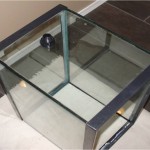
How to Drill a Aquarium
In the past I’ve always bought my tanks drilled if that is what I wanted. One day I asked myself, “why”. So I figured I would learn how to drill a tank and try it out for myself. No sense in paying extra for something that I can do myself. I practiced on a pc of extra glass I had left over from making my sump, just to be safe before trying it on one of my tanks. Here’s how I did it.
Continue reading
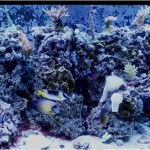
Setting-up Your First Marine Aquarium
I’ve been asked how to set-up a marine aquarium many times by people who are starting to think about getting a marine aquarium. As with all things in this hobby, there is more than one way to set-up a healthy and thriving aquarium. Before you can get to the point of a detailed step-by-step how to set-up a marine aquarium, you must first consider a few of the critical element to having a great set-up. Once you have those basic elements figured out, planning the rest of the set-up quickly starts to become really easy.
Continue reading

Some Tips for Beginners
The below is some key learnings that I had stumbled upon in my never ending journey of learning and keeping marine aquariums. I thought I would take the time to share them.
Continue reading
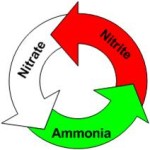
The Nitrogen Cycle
Overview
When we talk about having a cycled and established tank, we are really referring to having a tank with a developed and functioning nitrogen cycle within our aquarium. Before you cycle an aquarium for the first time, it would benefit you to better understand how the nitrogen cycle works.
Continue reading
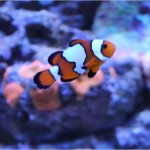
Good Starter Fish and Clean-up Crew Options
So, now after deciding to set-up your first marine aquarium and having your patients tested to the limit waiting for your tank to become cycled, you are now ready to add your first inhabitants.
Wither you decide to start off by adding your first fish or two, or start by adding your clean-up crew (CUC), can really depend a lot on your personal preferences and potentially any algae you would need to start controlling.
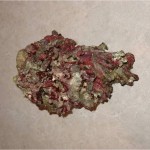
What are the benefits of live rock
When it comes to marine aquariums, you have a few choices for filtration. I prefer to use live rock for many different reasons. I have been asked many times why I prefer live rock over other types of filtration, so I thought I would take some time list the pros and cons of using live rock to help other decide if they would like to us live rock in their aquarium.
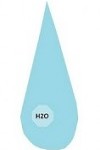
The Importance of Water Flow and Movement
In my experience, this is one of the more important factors in setting up a marine aquarium. Having good flow and water movement is key to having a great and healthy marine aquarium. Not having enough flow can lead to a variety of potential problems. I will explain why I have this opinion along with showing a few examples.

Continue reading
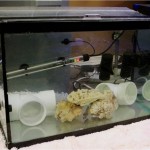
Quarantining New Additions
One of the toughest lessons that I had to learn the hard way is the importance of quarantining new fish before adding them to your set-up. When I was starting out in this hobby I did not use a quarantine tank and I was lucky for a quite a few years. But then my luck ran out and I had a whole tank wiped out by adding one little fish that was carrying a disease but did not show any symptoms. That was when I started learning how to quarantine fish and actuating following a quarantine process. Based on what I have read, having a tank’s complete stocking wiped out by a disease introduced from a new fish has driven more people out of the hobby than anything else. The good news is this is completely avoidable when you follow a quarantine process.
The below thread in our forum also highlights the importance if you still think it could not happen to you.
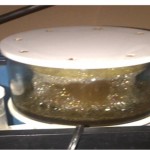
Carbon Dosing in Layman’s Terms
Carbon dosing certainly is not a new concept, but it has become more popular in recent years as hobbyist have been learning more about it and seeing some good results. It can be argued that this topic must be researched just as you would any other aspect of the hobby, but I would suggest this would require a little more detailed research as carbon dosing requires a good understand of: maintaining good water chemistry (water parameters), the factors that affect water chemistry, and how to quickly recognize changes in the appearance of your corals and/or the behavior of your fish. I would even go as far as to suggest using this article to guide your further research into this topic before deciding to start carbon dosing.
In addition, if your only goal for carbon dosing is to reduce very high levels nitrates and phosphates, then I would suggest carbon dosing may not be for you. In this instance, carbon dosing is only addressing the symptoms of high levels of nitrates and phosphates and not the causes of them. You could still have a problem with your set-up that is just not noticeable now and possible has even been complicated even more. After all, your very high nitrates and phosphates were not caused by a lack of carbon dosing.
I’ll try to explain what I have learned about carbon dosing and share some of my experiences with it. I prefer to explain things in layman’s terms as much as possible as I usually just give myself a headache when I try to correctly spell all of the scientific terms or all of the different scientific names of all the different types of bacteria.
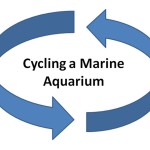
Cycling a Marine Aquarium
I just thought I would take some time to explain some of the methods that can be used to cycle a marine aquarium in a little more detail that what we currently have on our forum. The nitrogen cycle in a marine environment is similar to that of the nitrogen cycle in a fresh water environment. In both environments you have nitrifying bacteria that coverts ammonia into nitrites and nitrites into nitrates. While the nitrifying bacteria in a marine aquarium are different bacteria then the nitrifying bacteria in a fresh water tank, they do perform the same functions and essentially work the same. A marine nitrogen cycle has the addition of de nitrifying bacteria which converts nitrates into nitrogen gas. I will be making many comparisons between the fresh water and salt water cycling methods through this article in order to better illustrate some points better for people who are new to salt water aquariums.